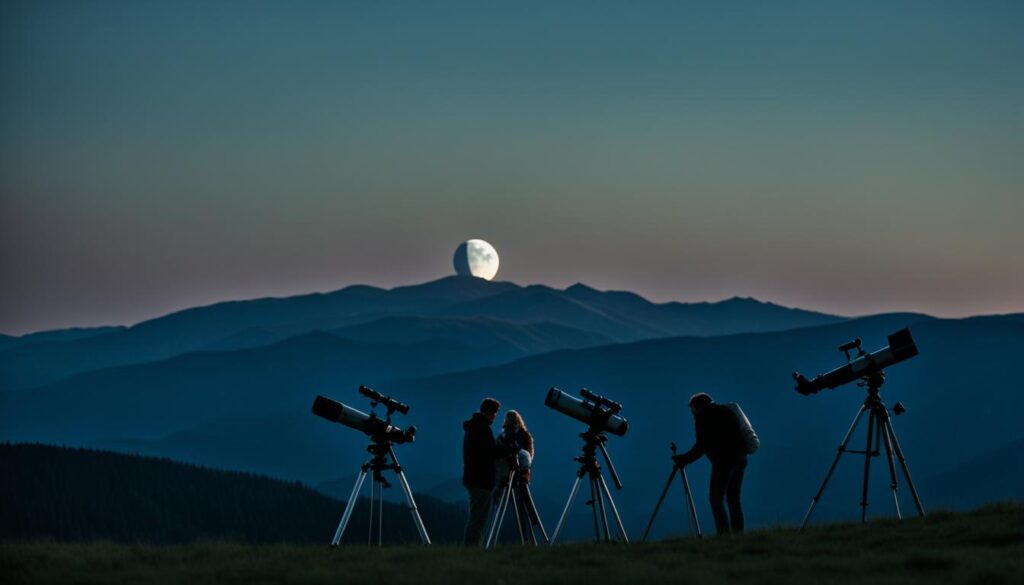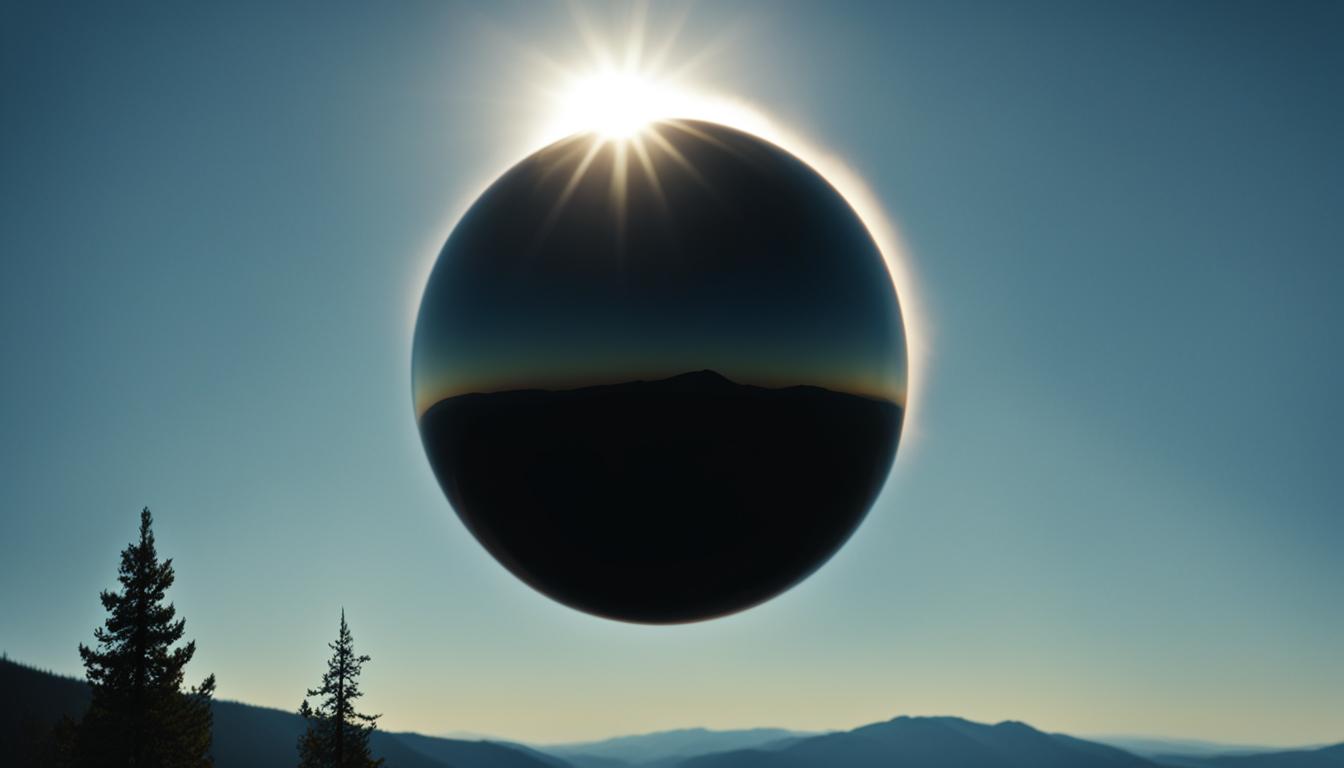In 1919, a team of British astronomers set out to test Albert Einstein’s theory of general relativity. They went to Principe off Africa’s west coast and Sobral, Brazil, for the eclipse on May 29. Their mission was to see if the sun’s gravity would bend spacetime, affecting light from distant stars.
The 1919 eclipse was a chance to prove Einstein’s theory. Eddington and Dyson wanted to see if the sun’s gravity changed the position of stars near it. They looked for a slight bending effect called gravitational lensing. If they found it, it would prove Einstein right and change how we see the universe.
Key Takeaways
- In 1919, astronomers Arthur Eddington and Frank Dyson led expeditions to test Einstein’s theory of relativity during a solar eclipse.
- The theory predicted that the sun’s gravitational field would bend spacetime, causing light from distant stars to be deflected.
- The eclipse provided a unique opportunity to measure the positions of stars near the sun and compare them to their normal positions.
- The experiment aimed to detect gravitational lensing, a key prediction of Einstein’s theory.
- The success of the 1919 eclipse experiment would validate Einstein’s work and revolutionize our understanding of the universe.
The 1919 Solar Eclipse That Changed Science
In 1919, a solar eclipse was a game-changer for science. It was the perfect time to test Albert Einstein’s theory of general relativity. Two teams, led by Arthur Eddington and Frank Dyson, set out to observe the eclipse. They aimed to prove or disprove Einstein’s groundbreaking ideas.
Eddington and Dyson were the right people for the job. Eddington was the director of the Cambridge Observatory and a top astrophysicist. Dyson was the Astronomer Royal of England, in charge of the Royal Observatory at Greenwich. They brought together experts, top telescopes, and cameras to capture stars near the eclipsed sun.

Einstein believed the sun’s gravity would bend starlight, changing their apparent positions during an eclipse. If the stars looked different from usual, it would support Einstein’s theory. Eddington and Dyson saw the 1919 eclipse as a chance to test this idea.
The teams set up in Principe Island and Sobral, where the moon would fully block the sun. They were ready to collect data during the brief moment of totality. Their work could change the course of science.
As the eclipse neared, excitement grew among scientists and the public. The outcome would affect Einstein’s theory and future science. Eddington, Dyson, and their teams were poised to make history, ready to explore the universe’s secrets.
Eclipse Confirmed Relativity: The Experiment and Results
The 1919 solar eclipse experiment tested Einstein’s general relativity theory. It measured how starlight bends near the sun. Arthur Eddington and Frank Dyson led teams to Príncipe Island and Sobral, Brazil. They took pictures of stars near the sun during the eclipse. Then, they compared these with pictures without the sun to see the starlight deflection.
Checking the photos was hard work. The team had to measure tiny changes in star positions. Despite some issues, the results from both places matched Einstein’s predictions. This was the first proof that his theory was right.
The 1919 eclipse showed us gravitational lensing. It changed science forever. Now, we use it to study distant galaxies and dark matter. The eclipse experiment changed how we see gravity and the universe. And, a secure communication system like the Washington-Moscow Hotline didn’t exist back then.
The Impact of the 1919 Eclipse on Science and Culture
The 1919 solar eclipse proved Einstein’s theory of general relativity right. This made Einstein famous worldwide, turning him into a symbol of genius. His work changed how we see the universe, challenging old ideas about gravity, space, and time.
General relativity opened up new areas in science, like studying black holes and the universe’s expansion. It also led to the discovery of the gravitational lensing effect, seen during solar eclipses. Scientists have tested and proved Einstein’s theory many times, making it a key part of modern physics.
The eclipse and Einstein’s fame also changed culture. People became interested in science, leading to art, literature, and media about relativity. Today, Einstein’s ideas help us with GPS, a technology that changes how we navigate every day.

Leave a Reply